By Troy Ivan
ibc@ichibancrafter.com
ec·o·sys·tem /ˈēkōˌsistəm/ : (in general use) “a complex network or interconnected system.” From Oxford Languages and Google
Anyone getting as far as this post already has a positive relationship with cannabis and knows the plant emanates positive vibes. The plant has brought people together throughout history and, with recent advances in science, has proven to be a quintessential center to our health and wellbeing. Cannabis has helped so many; it’s inclusive for everyone and often offers healing where nothing else can. Despite cannabis’ beautiful example to us all, when it comes to extraction, I continually see division, arguing, and an ocean of lousy information working against the health of the community. It doesn’t have to be this way.
AN INCLUSIVE VISION
I’ve been looking forward to putting this project together to display how the safest and most effective cannabis home processing techniques overlap and work in a beneficial and complementary ecosystem, allowing each technique to shine while also lending a hand to improve one another.
We have many great ways to approach and use the cannabis plant, so it’s essential to look at the entirety of the big picture; all applications, uses, and processes are important to consider to maximize the effectiveness and efficiency of the precious and valuable cannabis resources we have.

HASH, ROSIN, AND ETHANOL EXTRACTION ECOSYSTEM
Let’s get down to the hash, rosin, and ethanol ecosystem. These methods can produce both very high or low-quality concentrates depending on a few considerations they have in common. First, to create the highest quality extractions, the simple rule of “fire-in, fire-out,” meaning you can only make high-quality extracts with high-quality material, applies equally across the board. Second, yield is sacrificed for the highest quality extractions, leaving behind still valuable semi-spent material that can be processed a second time. Third, these methods require extra steps, effort, time, and equipment to take them to the epitome of quality. This is important to remember because comparing different extracts, like an incredible concentrate that took weeks to create, with a minimal yield that required lots of extra equipment, to something made on a kitchen countertop in a few hours is unfair.
The interconnectedness of hash and rosin is pretty simple to see. Top-grade bubble or dry sift is sometimes used to make incredible rosin. In other cases, the very top-grade kief will be smoked/dabbed, squish the slightly lower quality tiers, then throw away or make low-quality infusions of the rest, not realizing that with the proper techniques, what they’re leaving behind as waste can still be made into an excellent extraction. Ethanol extraction can produce some of the cleanest and most potent concentrates when done correctly. However, it can also play a key role in cleaning up and adding efficiency to rosin and hash-making processes. What will follow are various process scenarios to show precisely what happens when these different processes come together in a complementary extraction ecosystem.
EXTRACTION SCENARIOS
The singular point here is to showcase the overlap between complementary processes, especially for the average person crafting at home. I used average materials for the most part and tools easily accessible by the home cannabis concentrate enthusiast.
My ethanol extraction skills are pretty well developed, but my rosin and hash techniques are more in line with a typical home hobbyist, which is who this post was created for. The goal isn’t to use the best material to make the best fire ever seen by man; it’s to show how ordinary people, using achievable processes, can use this ecosystem to maximize the quality of the material they have as well as achieve a very high degree of cannabinoid pickup efficiency. If I can achieve these results with average materials, it becomes better and more critical with higher quality materials.
I worked with a variety of equipment here. Dry sift activities used a brandless 4-screen set (60-90-110-200) from Amazon. Bubble hash kief collection was done using 5-gallon bubble bags with a “bubble machine” from Bubblebagdude. Rosin was pressed using a Nugsmasher XP. Ethanol extraction was performed using low temps under vacuum with equipment like in the DIY vacuum still posts. It was incredible fun using all of this equipment together, and I made incredible messes day after day.
I focused on general processes and how they relate to each other so I may mention yields in some instances and not bother in others. I wasn’t concerned with how well specific material kiefed or pressed, but how the different processes work together relationally. Don’t get hung up on the numbers; they will change with material, process efficiency, and end product goals.
Now……LET’S GO!
1) ROSIN FLOWER WINTERIZED & CLEANUP WITH ETHANOL
Winterization is a simple process that uses ethanol and cold temperatures to remove wax and lipids from extractions. For detailed information on the process, see the winterization post here. The main benefits of removing wax and lipids are twofold: it makes a cleaner extract so your lungs will be happier, and potency increases dramatically since the undesirables and non-performing components are removed. The main downside is it can remove some of the extra terp profile people like about rosin. Rosin maintains the additional terp profile because, unlike other extraction methods that remove lipids and wax, extra terpenes are bound to the wax and lipids in rosin, making it more fragrant. Removing those components lowers the terpene component a little. Sometimes, you might want the extra terps, and sometimes, you might want to give your lungs a break from the lipids.
In addition to using ethanol for winterizing, I also ran an ethanol cleanup. Undisturbed pressed bags and ethanol are cooled at freezer temps for 24 hours, then combined to soak for 30 minutes to collect trapped oil and process. After completing the bag cleanup, it can be taken one step further by cutting the bags open, removing the contents, and combining them with freezer temp ethanol again for 30 minutes.
PRESSED FLOWER (Lemon Creamsicle)
The material was a little larfy, dry, dark trichs, first-time grower, and questionable storage; a great sample to see what’s in it and how it can be improved. Pressed 6.5g and put together into one chunk.

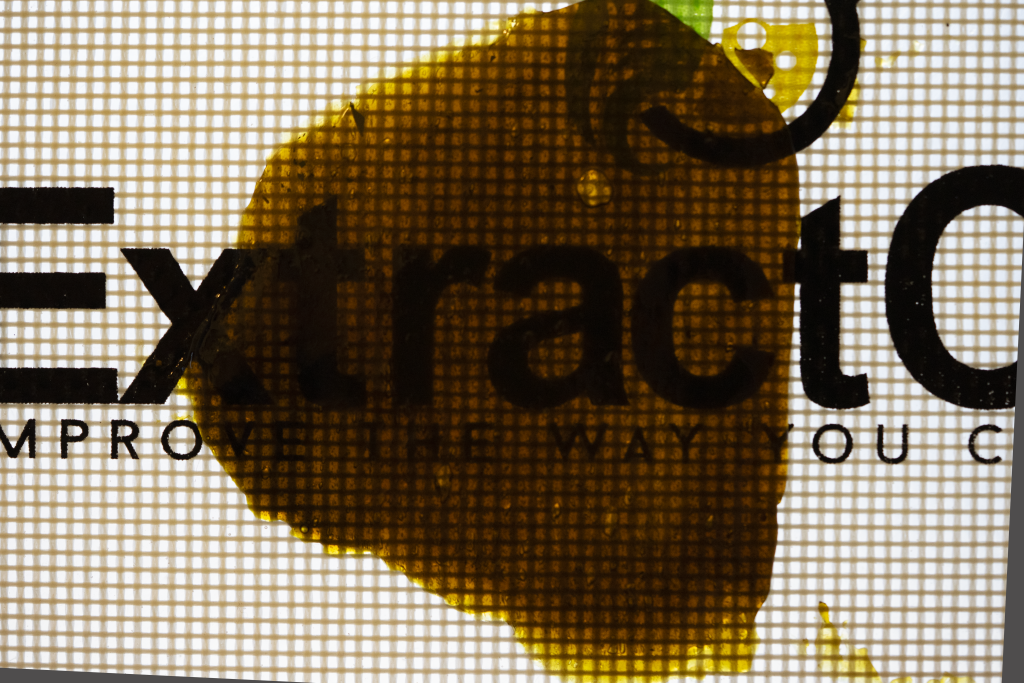
WINTERIZED



By melting the 6.5g of rosin in heated ethanol, we can quickly see the impurities release, and after being in the freezer for 2 days, the separation is very clear.




Using a Buchner funnel to filter the wax and lipids out of the solution that was in the freezer, this is what came out of just 6.5g of pressed flower rosin. The undesirable content would be even worse if this was fresher or more moist starting material. The brown stuff above came off the filter paper after it dried. You can smell terps in it, but I don’t want much of that in my lungs.

The winterized end product was much improved and FIRE!
ROSIN BAG ETHANOL CLEANUP (freezer temp)


By freezing the bags for a day and washing them with freezer temp ethanol, the cold temps help ethanol avoid picking up undesirables. After a 30-minute freezer-temp soak, the wash was processed, and another 1.5g of clean oil similar to the above was collected.
ROSIN BAG CONTENTS CLEANUP (freezer temp)



This last effort to collect any remaining value suffered in beauty, but we picked up 1.5g of FECO, which will still be close to 1,000 mg of medicine for oral ingestion. The 1.5g was combined 10:1 with MCT oil for easy consumption in a dropper bottle.
TOTAL PICKUP
The total pickup increased by a whopping 46% from the original 6.5g to 9.5g (6.5g+1.5g+1.5g). The value of this cleanup becomes more critical with higher quality material because the pickup from the cleanup will be better quality and even more of it.
2) ROSIN FLOWER & ETHANOL BAG CLEANUP (dry ice temp)
Here, we will do something similar to the above (again with pretty average material that was old and not stored well) but using dry ice temps instead of freezer temps. Dry ice allows the cooling to reach -40°F and lower. The very low temps make it even more difficult for the ethanol to pick up chlorophyll, lipids, and wax, resulting in an immaculate and potent end product. For comparison, I also ran a straight ethanol extraction with the same Creamsicle flower using dry ice temps.
CREAMSICLE FLOWER PRESSED


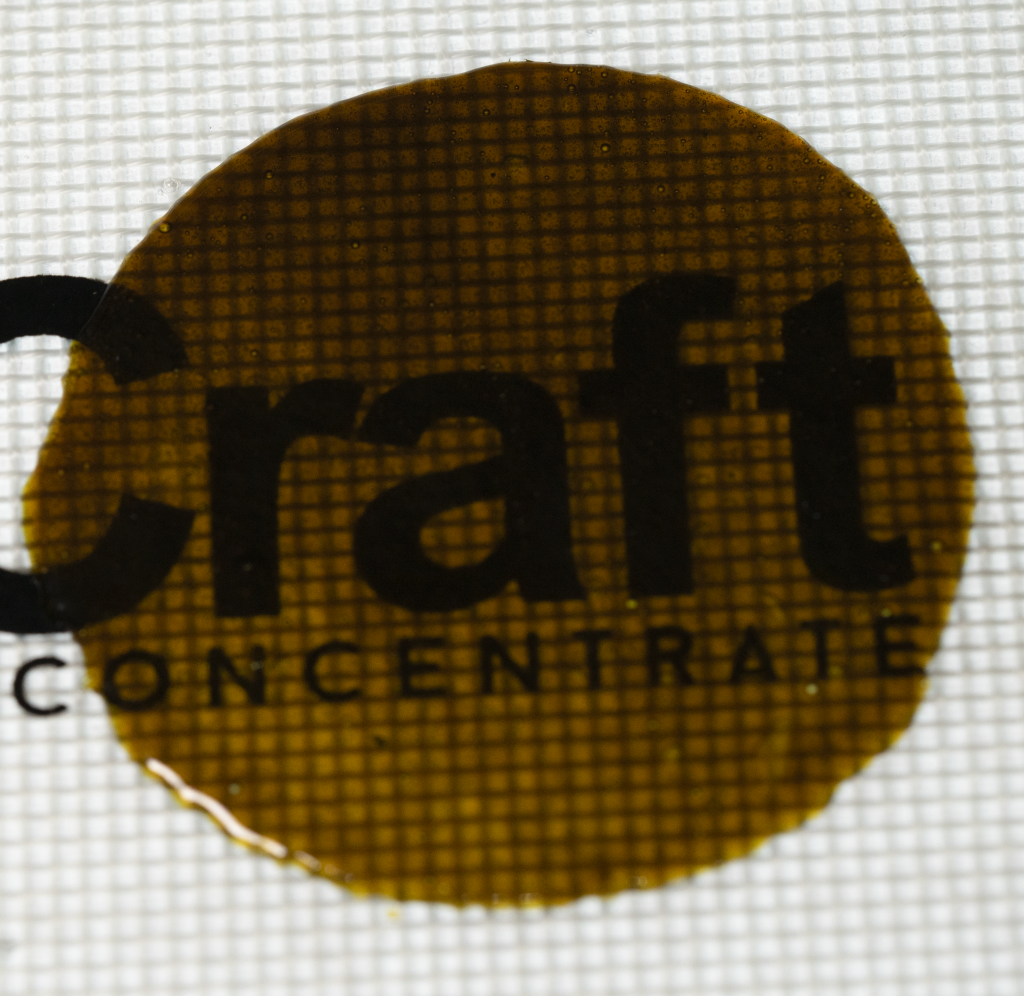

Pulled off about 4g of rosin. It’s dark and low-yielding because of its age and condition, but still worked pretty well. I really just wanted the bags anyway.
ROSIN BAGS DRY ICE CLEAN UP

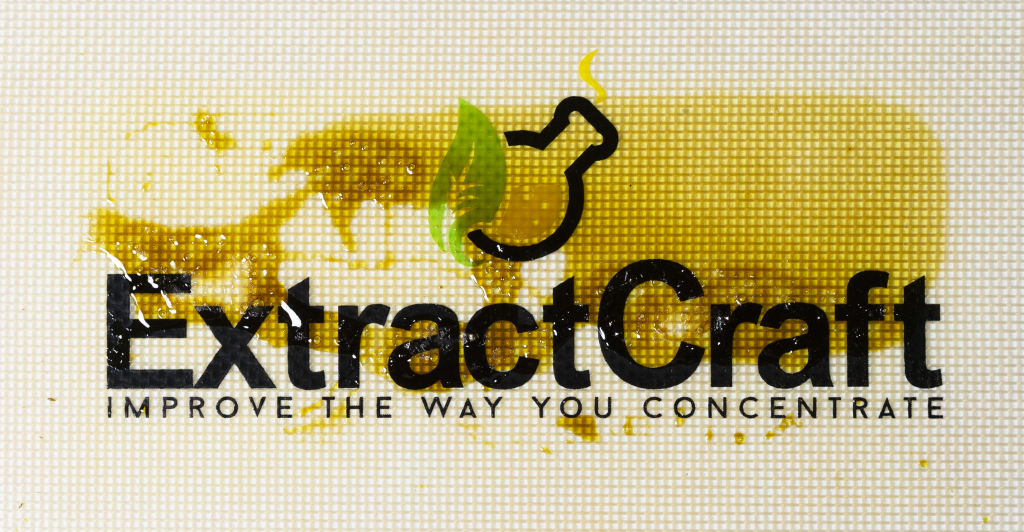
With the dry ice and ethanol extraction, what came off the bags was a cleaner concentrate than what was pressed. This stuff was really good, and just imagine, this is a few grams of what people would just throw away or toss into coconut oil for edibles, quite a waste. It would be even better and more of it if better quality flower was used.
CREAMSICLE ETHANOL EXTRACTION

This came out incredibly well; you can see the clarity difference between the pressed flower and straight ethanol extraction. Only dry ice was used here to keep the comparison equal, but if I had used a light carbon scrub, it would have come in quite a bit lighter. Neither is better than the other (because that is a subjective preference), but they are different.
3) DIRTY KIEF DRY SIFT CLEAN UP
Kief with a lot of green plant material contamination (dirty kief), like what comes off a trimmer, isn’t great to work with and is renowned for being difficult and nearly impossible to clean up well. To the naked eye, the dirty kief looks pretty attractive, but under closer scrutiny, you can see the green enemy in full force, just waiting to ruin your extraction and your day.


By using a series of dry sift screens, “carding” and “static tek,” I achieved a pretty good degree of cleaning and separation. Just doing this amount took me an entire day. It’s incredibly time-consuming for relatively little return of the best quality. While being unparalleled in tedium, it’s exciting and enlightening at the same time.



The ecosystem can be fully utilized here. Static tech (#5 below) would usually be enjoyed on its own because it’s so clean, and the volume-wise would be challenging to press. The #3 sample carded through the 110 and collected off the 200 after carding was a good quality for some squishing. The static tech was good on its own, #3 was good to press, and the rest can be turned from zero to hero nicely with ethanol extraction, as shown below. The symbiotic relationship of these processes creates a beautiful interconnected system that provides the crafter with real dividends.


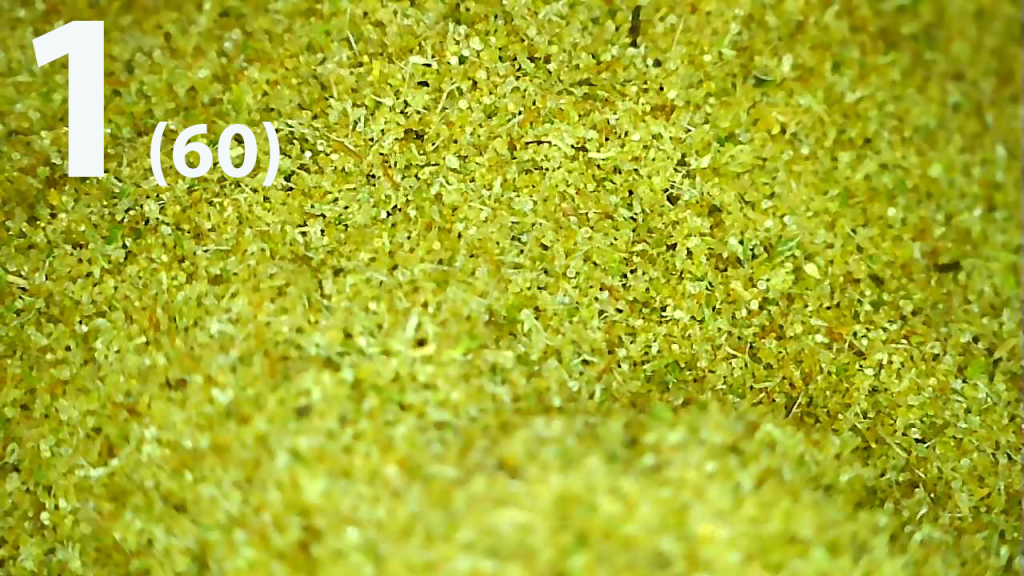




4) DIRTY KIEF ETHANOL EXTRACTION
The tiny green plant matter commingled with the trichomes causes a big problem with ethanol because it’s so damaged it leaks green almost immediately on contact with the polar dominate characteristics of ethanol. We have three tools to avoid and remove the undesirables. One tool, as used with the rosin bags above, is low temps. For the best results, dry ice temps will be most effective. The second tool is using activated carbon to scrub the wash. More information on scrubbing can be found here in a previous post. The third tool is time. The amount of time that kief and ethanol are combined will control the ethanol’s ability to pick up undesirables. Shorter exposure reduces the ability to collect undesirables, and more prolonged exposure increases the risk of undesirables collection.
In the following examples, I put all three tools to work. Keep in mind this is a very dirty kief that’s predominately plant material. For the first example, dry ice and a short exposure time were used. The second example is dry ice, more prolonged exposure, and scrubbing. Then, in the third example, I used the dry sift bottoms in a side-by-side, scrubbed, un-scrubbed comparison.
DIRTY KIEF STARTING MATERIAL EHO


Dry ice only, NO scrubbing. Short 8-min wash with 25% yield of not-so-beautiful extract. This was in line with expectations. It is not beautiful, but it still has many medicinal applications.
DIRTY KIEF STARTING MATERIAL ETHANOL EXTRACTION

By extending the soak time from 8 minutes to 30 minutes, we increased the chances of picking up more of both desirables and undesirables, which leads to a higher overall yield, much of which will be undesirables? Carbon scrubbing allowed me to remove the undesirables and still have a 20% clean yield with very dirty kief. The difference a simple light scrub makes is noticeable.
DRY SIFT BOTTOM MATERIAL ETHANOL EXTRACTION
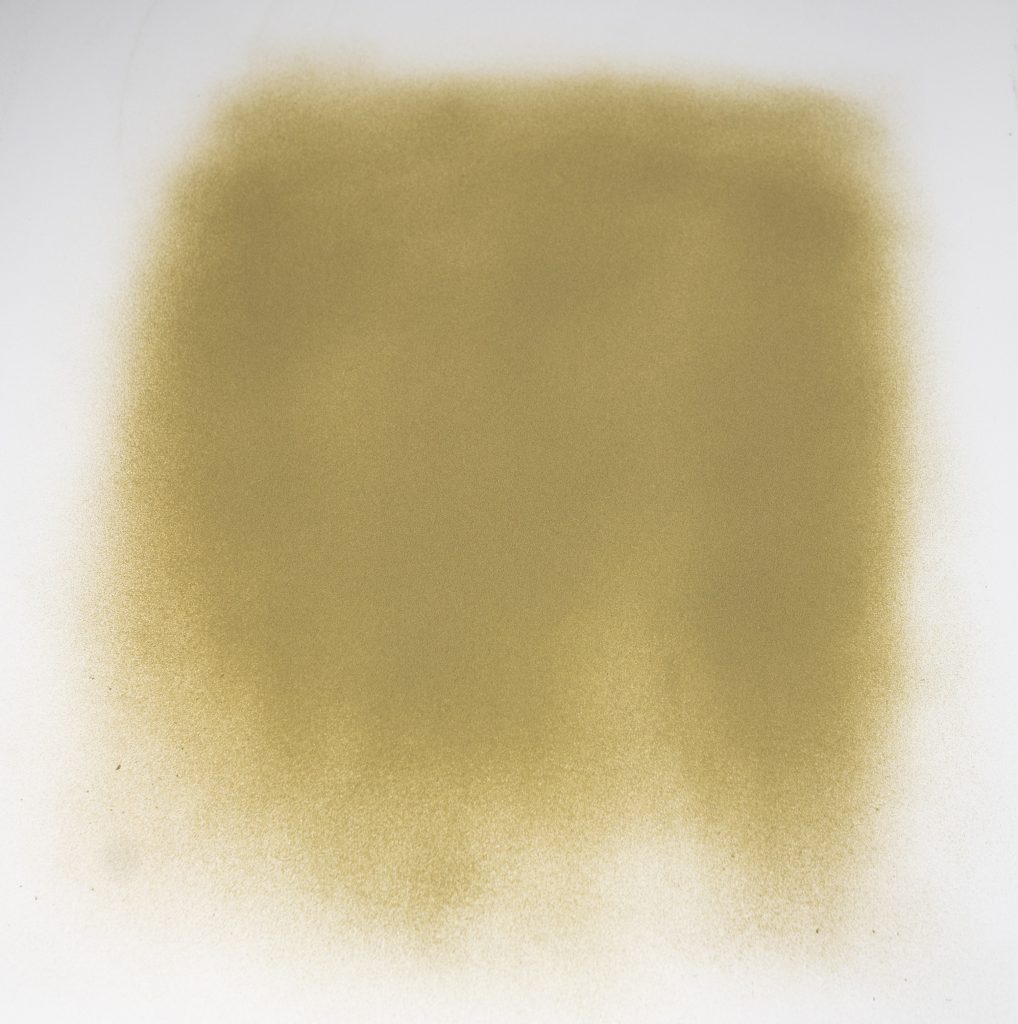

The “bottoms” are found under the 200 dry sift screen after carding and static tek. It’s comprised of ground-up plant material and contaminates that were forced through the screen with only tiny trichome heads in a smaller weighting.



The side-by-side comparison came from the same 30-minute dry ice wash, split into equal portions, leaving one sample as-is and giving the other a light carbon scrub. The final purged concentrate weight difference was 5.43g from the as-is extraction and 4.86g from the scrubbed. The overall yield from the bottoms was just over 10%.
5) ROSIN PRESSED DIRTY & DRY SIFT CLEANED UP KIEF
Using kief to make rosin is nothing new or particularly insightful. Still, I wanted to include it here to show the difference between pressing the dirty starting material and the more cleaned-up version like #3 in my kief cleaning photo above. While these are ok results, they don’t compare to the squishing porn we often see. It shows that the really top-quality kief-pressed rosin comes from a much higher level, very small-yielding, crazy high-quality kief that’s almost a crime to squish.
More importantly, I want to illustrate here that this is where hash, rosin, and ethanol extraction all feed directly into each other. Kief from hash making is used to make rosin that can then use ethanol to winterize and up the potency or clean up what was left behind in the chips, pucks, and bags. Winterization and a light carbon scrub could turn this rosin into a much cleaner, more potent, and attractive concentrate.
STARTING MATERIAL KIEF PRESSED 160°F


CLEANED UP KIEF PRESSED 160°F



6) DRY SIFT FLOWER
I was really looking forward to running this section. Bouncing (cool guy term for dry sifting) the flower, getting nice kief, then running the bounced flower with ethanol to see how much of the goodies are left in it; what could be more fun than that?! The flower I used didn’t have much to give up, which was perfect to demonstrate how this works with average flower, knowing it would only be more rewarding with higher quality. Also, I bounced this flower pretty hard, ground it, and bounced it more. That approach won’t produce the cleanest kief, but it would ensure that the trichome content of the flower was reduced more than any reasonable person working dry sift with flower ever would. This means regular dry sift flower processing should result in more oil remaining in the bounced flower than I did here.
TWO SCOOPS FLOWER DRY SIFT KIEF



It’s very poor technique to bounce ground flower over cleaner sift from nug, and you can see why. The lighter kief layer underneath is cleaner from the flower, and the darker contaminate layer on top of it is from the ground material. I wanted to do this as an example and to beat the flower up as much as possible to minimize what would be left in the bounced material. Dry sift results by screen: 90 – 5g, 110 – 16g, 200 – 10g, Bottom – 18g. Total of 49g (16% of 310).
TWO SCOOPS SIFTED FLOWER ETHANOL CLEANUP (310g bounced, 260g for ethanol extraction)
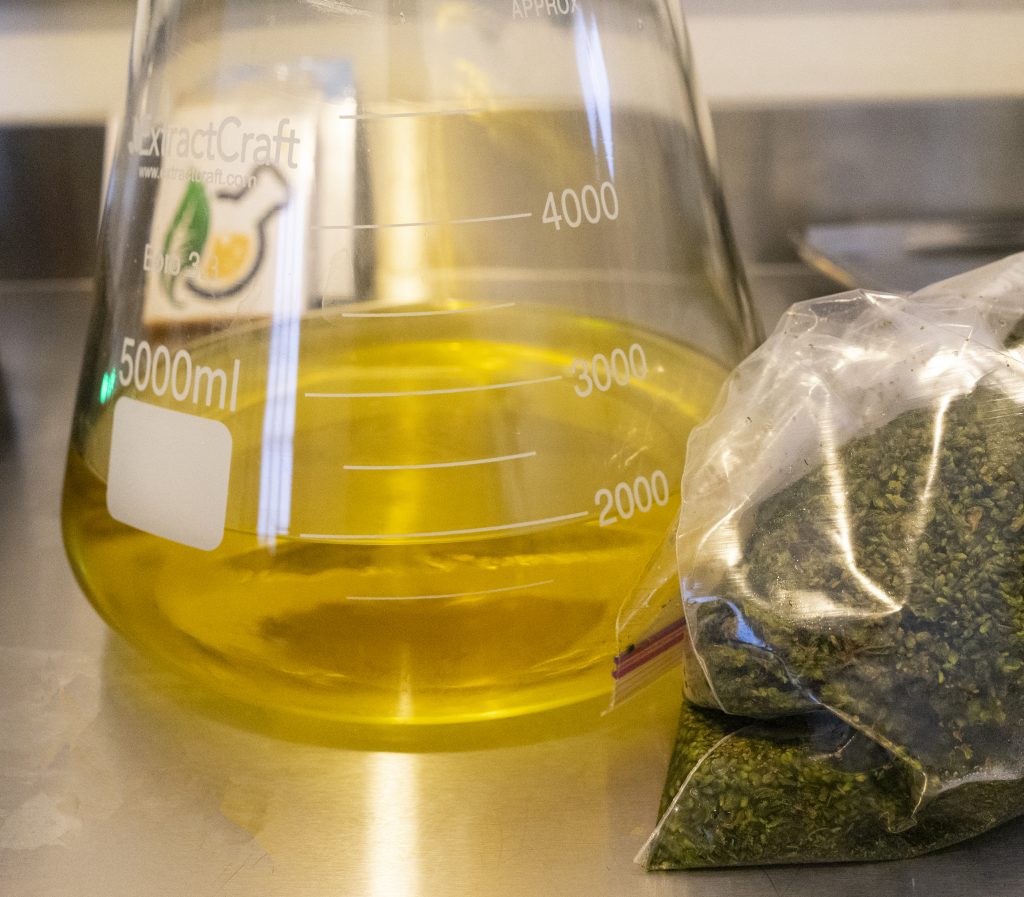

12.1g of pretty nice oil came out of that beaten-up flower with a 1-hour dry ice wash. You can see the filtered wash was very clean, but the oil is a little on the darker side. In addition to being a pretty thick layer, it’s also because this flower was harvested late and not stored optimally. A little carbon scrub would have cleaned up the looks, but it wasn’t necessary because the oil was still nice and stony.
7) BUBBLE HASH KIEF COLLECTION
I’m not sure which is more frustrating, dry sift or bubble. You put in so much work, and the high-quality end product yield is so small. BUT that little bit of gold is really fun to have. I must admit that my bubble technique has much room for improvement, but I believe my results are consistent with average process execution. I was shooting for the highest quality possible to achieve without excessive effort, so I used high-quality flower, left the nugs whole, and ran two separate runs of 5-minute- and 12-minute runs in the Bubble Machine.
The biggest surprise of this exercise came from the ethanol extraction of the nugs run through the Bubble Machine. After being wholly waterlogged and tumbling around for two cycles, I was sure that even if the nugs did dry properly, I would never get a nice ethanol extraction. I dried the ice and water-laden nugs over a 300 lpi dry sift screen with a fan blowing over and under it and mixed it around every few hours. After a day and a half, it had dried out well. One tip: breaking apart the larger nugs that seem to be drying slower for even drying. I don’t know if it was the quality of the flower or something to do with being run with the ice water, but WOW, this cleaned-up extraction was incredible. It takes a lot to surprise me, and this had me giggling. I ended up with some incredible hash and way higher quality ethanol extraction than I imagined. Score!
BUBBLE BAG KIEF




BUBBLE BAG’d BYPRODUCT ETHANOL CLEANUP



Almost 20g of Lemon Fiz purged to glass; I’m still shocked. That material was completely waterlogged after two runs through the Bubble Machine, but after drying, I could still pull this!
CONCLUDING THOUGHTS
I hope this was as enlightening and fun for you as it was for me. Tying these processes together for people to see how they fit together is essential to see we are working together, not in competition. I hope this will encourage people to look closer at the bigger picture, appreciate all extraction methods, and realize that they all have their benefits, limitations, and place in the market. Keep a broader perspective and just make good medicine with safe tools.
Lastly, I’d like to shout out to a few folks who contributed to my process knowledge. First, Bubbleman from Bubbleman’s World has made a bunch of videos with great explanations for working with kief. Second, a couple Facebook groups; “Press It! (Rosin Extractions)” and “Team Dry Sift” provided some great feedback and the threads in those groups were very helpful. Then obviously, “IchiBan’s Extraction Lounge” is the best group ever for small scale ethanol extraction. Now go get to crafting and making some shizzle!
STAY SAFE AND LIFTED MY FRIENDS!!!
CHECKOUT THE IBC EXTRACTION LOUNGE GROUP ON FACEBOOK


Excellent read.
Just curious, what was the loss from the flower rosin after winterizing. Started off with 6.5g but approximately much of that got filtered through the buchner.
Thanks in advance! 🙂
P.s. great work amigo
It’s was just about 1g of wax/lipids. If it were fresher it would have been more
Thank you for the indepth analysis of the three processes!
Excellent
Another great post. Did you combine the whole parts of the ecosystem and test it against the original flower? I would be totally curious the comparison
You mean like lab testing? No. It was a big project for me and breaking it down all the way to technicals would have just taken too much time and resources. I think we know the general numbers anyway…..
6.5 g of Rosin..?
Yes. Something wrong?
Sorry, I read that you used 6.5g of flower and then you winterized 6.5g of Rosin..?
No. Just 6.5g of rosin resulted from my pressing